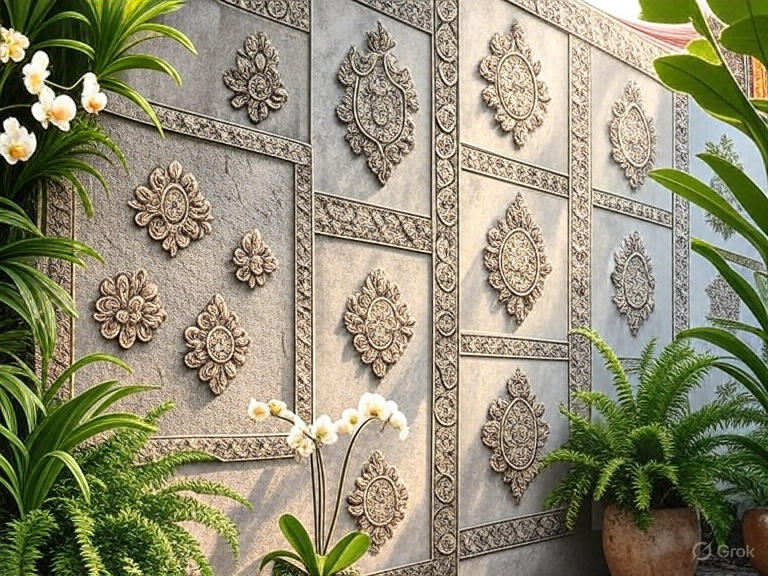
October 01, 2025 - Zed van der Vyver
Introduction to Plastering in Thailand
Plastering is a key step in constructing or renovating homes in Thailand, providing a smooth, protective layer for walls and ceilings. In a country with high humidity, heavy monsoons, and intense heat, plastering enhances durability and aesthetics. This blog will explain why plastering matters in Thailand, the different types for various needs, how they’re made, and what they might cost. No construction knowledge needed—just clear info to help you understand this essential process!
Why Plastering Is Essential in Thailand
Plastering covers rough surfaces, protects walls from moisture and pests, and creates a finished look for interiors and exteriors. In Thailand, where monsoon rains can soak through untreated walls in places like Ayutthaya or Chiang Mai, it prevents dampness and mold growth, a common issue in humid conditions. It also insulates against heat, keeping homes cooler in Bangkok’s urban sprawl or Phuket’s coastal areas. Beyond function, plastering allows for decorative finishes, blending traditional Thai styles with modern designs, making it vital for both protection and appeal.
Types of Plastering for Different Scenarios in Thailand
Plastering varies by material and purpose, and the right type depends on your climate and building needs. Here’s a look at common types in Thailand and where they fit best:
Cement Plaster
Use: Exterior walls or damp areas.
Why: Made from cement, sand, and water, it’s strong and water-resistant, ideal for Thailand’s rainy seasons.
Example Scenario: A rural home in Isaan.
Gypsum Plaster
Use: Interior walls or ceilings.
Why: Lightweight and easy to apply, it provides a smooth finish and resists fire, perfect for dry indoor spaces.
Example Scenario: A condo in Nonthaburi.
Lime Plaster
Use: Traditional or breathable walls.
Why: Made from lime, it allows moisture to evaporate, reducing mold in humid climates like Phuket.
Example Scenario: A heritage house in Chiang Rai.
Decorative Plaster
Use: Feature walls or luxury homes.
Why: Often textured or patterned, it adds aesthetic value with materials like stucco or Venetian plaster.
Example Scenario: A villa in Krabi.
Your choice depends on exposure to weather, moisture levels, and design preferences. Thai brands like SCG or local masons offer tailored options.
How Plastering Is Made in Thailand
Plastering in Thailand is crafted to endure the tropical climate while meeting structural and decorative needs. Here’s a general overview of the process:
- Surface Prep: Walls or ceilings are cleaned, and any cracks are filled. In humid areas, a waterproof base coat is applied.
- Mix Preparation: Cement plaster uses a mix of cement, sand, and water (1:3 ratio). Gypsum is mixed with water alone, while lime is slaked and combined with sand.
- Application: A base layer is troweled on, followed by a finishing coat. Multiple layers ensure strength, with drying time adjusted for humidity.
- Finishing: Surfaces are smoothed or textured. Decorative plaster may involve stencils or hand-carving, common in Thai designs.
- Curing: Plaster cures with controlled water application, critical in Thailand’s dry and wet seasons to prevent cracking.
Local masons in rural areas often mix plaster by hand, while urban projects in Bangkok use pre-mixed products from factories.
Cost Comparison of Plastering in Thailand
Plastering costs in Thailand vary by type, area, and labor. Here’s a breakdown (in Thai Baht per square meter, as of October 2025):
| Plaster Type | Cost (THB per sqm) | Typical Use | Notes |
|---|---|---|---|
| Cement Plaster | 150–400 | Exterior walls | Durable; labor-intensive application. |
| Gypsum Plaster | 200–500 | Interior walls | Quick drying; pre-mixed options available. |
| Lime Plaster | 250–600 | Traditional walls | Specialized; requires skilled labor. |
| Decorative Plaster | 400–1,200 | Feature walls | Design complexity increases cost. |
Example Calculation: A 50 sqm cement plaster job might cost 7,500–20,000 THB, while decorative plaster for the same area could be 20,000–60,000 THB. Labor adds 200–500 THB per sqm, higher in cities like Pattaya. Prices are up 10–15% since 2020 due to material and labor costs.
Final Thoughts
Plastering in Thailand protects and beautifies your home, tailored to the tropical climate’s demands. Whether cement for an exterior wall or decorative plaster for a luxury interior, there’s a type for every need. Consider your exposure to weather, design goals, and budget, and consult local masons for the best results. Plastering turns raw walls into a lasting foundation. Got questions? Leave a comment—we’re here to help!
